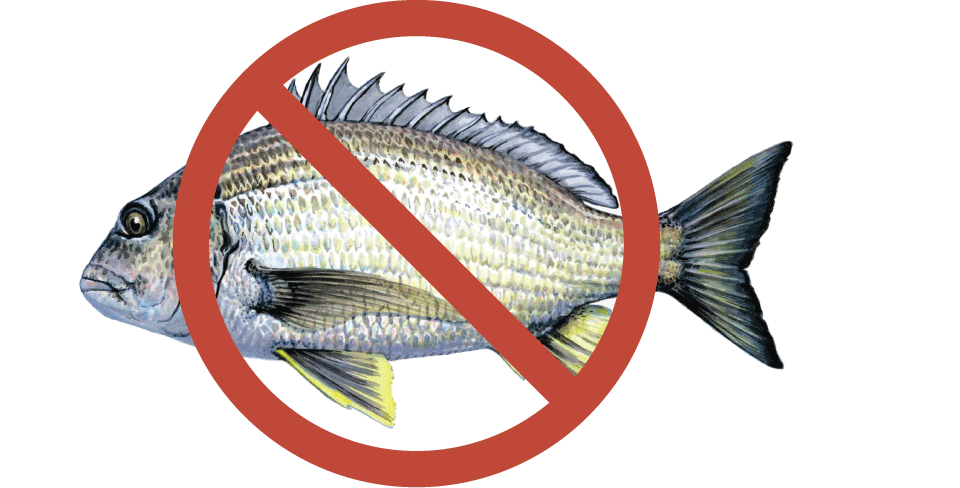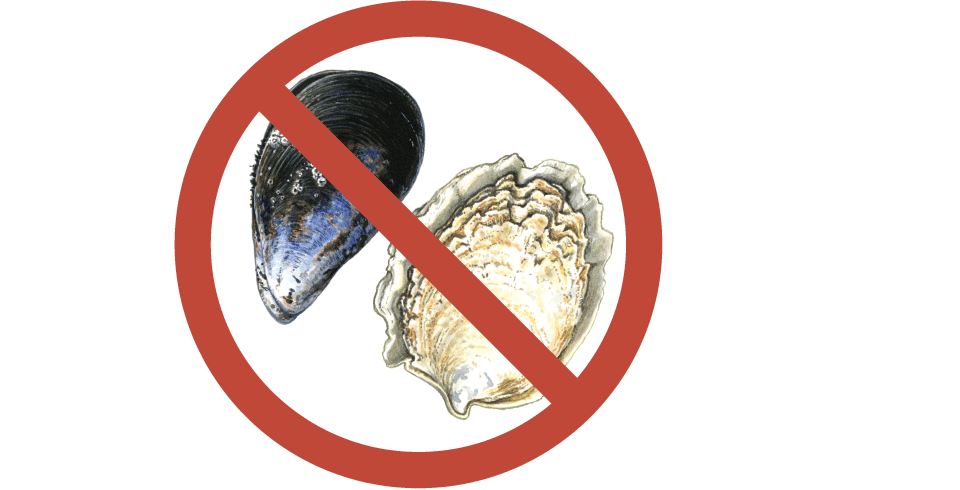Recreational fishing
Recreational fishing is popular throughout the estuary, with the most commonly caught species being flathead, barracouta, bream, Australian salmon, cod, wrasse, mullet and trout. (You can explore more about these fish in our species pages.) The upper estuary is particularly renowned for trophy-sized black bream. State and national fishing competitions are regularly held in the Derwent.
In Tasmania, certain types of recreational fishing have restrictions and you may need a fishing licence from Fishing Tasmania.
Commercial fishing
The Derwent is an important regional fishing port. Approximately 80 commercial fishing vessels are home-ported in Hobart, of which about 18 land seafood at the Port of Hobart including fish, crayfish, squid and other species from southern Tasmanian waters.
Commercial fishing operations in the Derwent have historically been quite significant, however, only the lower reaches of the estuary are open to commercial fishing now, with a limited number of operators. Whiting and flathead are their main catch. There are no aquaculture operations within the Derwent Estuary, however Atlantic salmon aquaculture is widespread in the adjacent waters of Northwest Bay, the D’Entrecasteaux Channel and Storm Bay.
Seafood safety
Heavy metal contamination in the Derwent Estuary has potential health implications for people collecting and consuming local shellfish and fish. Read more about heavy metal levels in Derwent shellfish and fish.
Heavy metal levels in oysters, mussels and flathead in the estuary have been monitored for over 20 years by operators of the zinc smelter, currently Nyrstar Hobart. Oysters and mussels from the Derwent Estuary contain high levels of heavy metals, particularly zinc, lead and cadmium. While levels appear to have declined since 2003 in some areas (i.e. above the Tasman Bridge), they are still far higher than national food standards.
Mercury levels also exceed national food standards in several species of Derwent-caught fish – particularly black bream – and to a lesser degree flathead and trout. Previous sampling suggests that levels are lower in other recreationally-targeted fish (e.g. whiting, Australian salmon, mullet, cod and flounder).
Average mercury levels in Derwent fish

Based on the most recent monitoring results for fish and shellfish, the current advice from the Director of Public Health is as follows:
- DO NOT eat shellfish collected from the Derwent (including Ralphs Bay).
- DO NOT eat any bream from the Derwent (including Browns River).
- LIMIT CONSUMPTION of flathead and other Derwent-caught fish to no more than 2 meals/week, or 1 meal/week for pregnant and breastfeeding women, women planning to become pregnant and young children.
The Derwent Estuary Program is working with its partners to raise public awareness about the potential health implications of eating seafood from the Derwent estuary, and has installed signage at popular fishing spots around the estuary. For more detailed information about heavy metal levels in oysters, mussels and a range of fish, read our 'Should I eat Fish and Shellfish from the Derwent brochure (PDF).
Heavy metal levels in seafood will continue to be monitored and a number of management actions are being undertaken to reduce contamination. Read more about heavy metals.
Should I eat shellfish and fish from the Derwent?

DO NOT eat any bream from the Derwent (including Browns River).

DO NOT eat shellfish collected from the Derwent (including Ralphs Bay).

LIMIT CONSUMPTION of other Derwent-caught fish to no more than 2 meals/week, or 1 meal/week for pregnant and breastfeeding women, women planning to become pregnant and young children.
